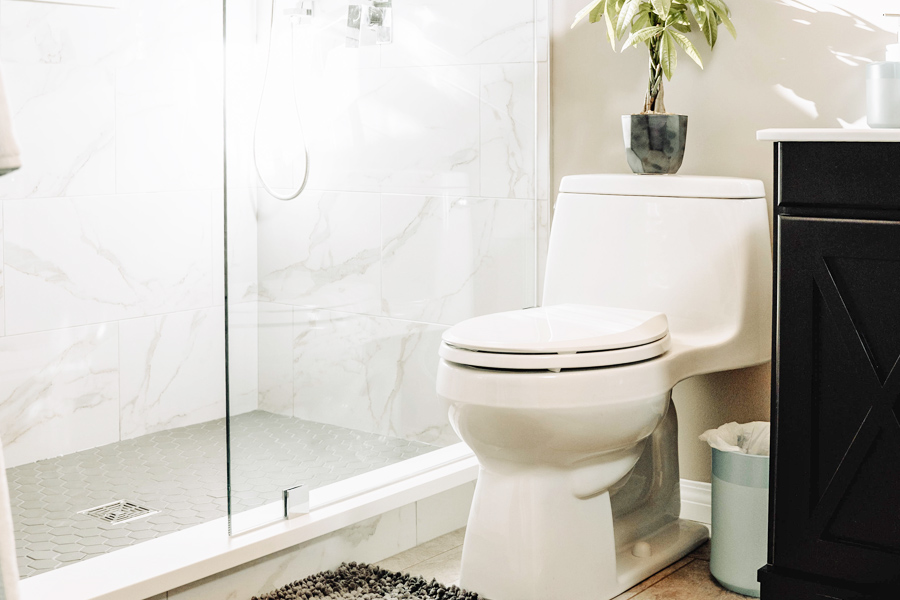In an era where every drop counts, finding efficient water-saving bathroom hacks has become more essential than ever. Whether you're looking to cut down on utility bills or contribute to environmental conservation, incorporating these hacks into your daily routine can make a significant difference. Let's delve into some actionable strategies that can transform your bathroom into a water-efficient haven.

Understanding the Need for Water Conservation
Before diving into the specific hacks, it's crucial to understand the broader context of water conservation. Globally, water scarcity is a growing concern, with many regions experiencing prolonged droughts and decreasing freshwater availability. By implementing water-saving techniques in the bathroom, homeowners can play a part in alleviating this crisis. Plus, conserving water often leads to reduced energy usage, since less energy is required to pump, heat, and treat water.
Install Low-Flow Fixtures
One of the most effective water-saving bathroom hacks is to install low-flow fixtures, including showerheads and faucets. These fixtures are designed to reduce water usage without compromising on performance. Modern low-flow showerheads can save up to 2,700 gallons of water per year, according to the Environmental Protection Agency (EPA). If you're curious about the benefits of these fixtures, explore resources like Are Low-Flow Toilets Worth It? for more insights.
Upgrade to Dual-Flush Toilets
Toilets account for nearly 30% of an average home's indoor water consumption. Upgrading to a dual-flush toilet can significantly reduce water usage. These toilets offer two flush options: a lower volume for liquid waste and a higher volume for solid waste. This simple change can save thousands of gallons of water annually. For more information on dual-flush toilets, check out this comprehensive guide on dual-flush toilets.
Fix Leaky Faucets and Pipes
A dripping faucet might seem like a minor issue, but it can waste hundreds of gallons of water over time. Regularly checking and maintaining your bathroom's plumbing can prevent leaks and save water. If you're unsure how to tackle plumbing issues, consider consulting a professional or using online resources to guide you through the process.
Adopt Water-Saving Habits
Beyond physical upgrades, adopting mindful habits can contribute to water conservation. Simple actions like turning off the tap while brushing your teeth, taking shorter showers, and only running the washing machine with full loads can collectively save gallons of water daily. Encourage household members to be conscious of their water usage and make it a family effort.
Consider Water-Saving Incentives
Many local governments and organizations offer rebates and incentives for homeowners who install water-efficient appliances. These programs can help offset the initial costs and make water-saving upgrades more affordable. For example, some municipalities provide rebates for water-saving toilet rebates, which can be a great starting point for eco-conscious homeowners.
Educate and Inspire Others
Finally, share your water-saving journey with friends, family, and neighbors. By educating others about the importance of water conservation and demonstrating how easy it is to implement these hacks, you can inspire them to make similar changes in their homes. Collective efforts can lead to significant water savings at a community level.
Conclusion
As we look towards a more sustainable future, the role of individuals and households in conserving water cannot be understated. By implementing these water-saving bathroom hacks, you can reduce your environmental footprint, save on utility bills, and contribute to the global effort of preserving our precious water resources. For further reading and more bathroom conservation tips, consider exploring related articles on eco-conscious bathroom remodeling.

FAQ
How much water can I save with low-flow fixtures?
Low-flow fixtures can significantly reduce water usage. For instance, a low-flow showerhead can save up to 2,700 gallons of water per year per household.
Are dual-flush toilets worth the investment?
Yes, dual-flush toilets are worth the investment as they offer two flushing options, which can save thousands of gallons of water annually. They are especially beneficial in households looking to reduce water usage.
What are some easy habits to start saving water immediately?
Some easy habits include turning off the tap while brushing your teeth, taking shorter showers, and fixing leaks promptly. These small changes can collectively save a significant amount of water over time.






